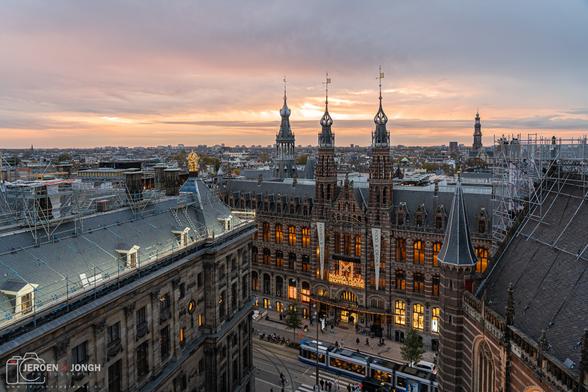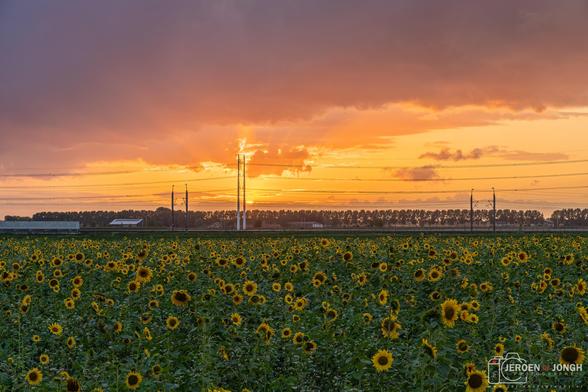I knew the opportunity to get on the roof of the Nieuwe Kerk was coming to a close (yesterday was the last day), so I decided to go last Friday.
It started off well when I hadn't even folded out my tripod entirely when a member of staff informed me tripods weren't allowed. Not that I could have actually used my tripod, as the floor was either somewhat flexible, or so flexible that you would have even felt an ant walking by. So cranking up the ISO and shooting out of my hands it was, and fingers crossed I had gotten something somewhat sharp.
Not going to lie, I definitely needed my photo editing software to get rid of the noise and to get this photo sharper, but all things considered, I'm not too dissatisfied. 🙂 Worth the € 7,50 admission fee and the effort of having to be in the Amsterdam city center that I have started to love to hate over the years. 😉
Sony A73, Sony FE 24-105mm lens
1/15th of a second, F/5, ISO 640
October 31st 2025, 17:11
#jdjphotographynl #nieuwekerk #magnaplaza #tram #openbaarvervoer #publictransport #amsterdam #iamsterdam #oogvoornoordholland #inholland #netherlands #hollandspracht #bestofnetherlands #nederland_wat_ben_je_mooi #hollands_mooiste_fotos #landscape #landscapephotography #cameranu_nl #zoomnl #cameraland_nl #zonsondergang #sunset
It started off well when I hadn't even folded out my tripod entirely when a member of staff informed me tripods weren't allowed. Not that I could have actually used my tripod, as the floor was either somewhat flexible, or so flexible that you would have even felt an ant walking by. So cranking up the ISO and shooting out of my hands it was, and fingers crossed I had gotten something somewhat sharp.
Not going to lie, I definitely needed my photo editing software to get rid of the noise and to get this photo sharper, but all things considered, I'm not too dissatisfied. 🙂 Worth the € 7,50 admission fee and the effort of having to be in the Amsterdam city center that I have started to love to hate over the years. 😉
Sony A73, Sony FE 24-105mm lens
1/15th of a second, F/5, ISO 640
October 31st 2025, 17:11
#jdjphotographynl #nieuwekerk #magnaplaza #tram #openbaarvervoer #publictransport #amsterdam #iamsterdam #oogvoornoordholland #inholland #netherlands #hollandspracht #bestofnetherlands #nederland_wat_ben_je_mooi #hollands_mooiste_fotos #landscape #landscapephotography #cameranu_nl #zoomnl #cameraland_nl #zonsondergang #sunset





